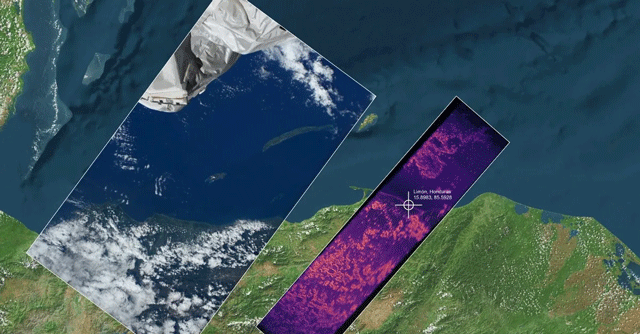
Project Falcon Neuro processes first batch of Earth observation data


The Project Falcon Neuro is finally active, after the joint venture between the United States Air Force Academy and the Western Sydney University announced that it has successfully processed the first batch of imagery data from neuromorphic cameras launched and fitted on the International Space Station (ISS) in January this year. The achievement marks a big move on the Earth observation imagery front, and could play a major role in observing and studying atmospheric events.
The Project Falcon Neuro stands out from other Earth observation projects and typical satellite imagery technologies. The latter is used in mainstream terrestrial applications, wherein on-ground situations are captured by typical cameras – sometimes with the ability to capture a wider light spectrum than conventional ones. Such images are then processed to offer data analytics for defence, forestry, agriculture, maritime movements and so on.
A neuromorphic camera, however, is significantly different. The latter does not capture images through a shutter. Instead, fine changes to brightness levels in front of a neuromorphic camera trigger individual pixels on the camera in question, depending on the extent and size of the area that undergoes the change in brightness. This helps the camera capture a brightness map of sorts, and in turn represent events or phenomena that may not be captured by conventional cameras. This is also why neuromorphic cameras are called ‘event’ cameras.

Now, members of Project Falcon Neuro have stated that the cameras, which were developed by the Western Sydney University’s International Centre for Neuromorphic Systems (ICNS), have worked perfectly fine. Such Earth-observation technologies, the researchers have said, could be used to study atmospheric events or changes that would otherwise be missed by conventional Earth-observation satellite imaging technologies such as hyperspectral imagery.
These atmospheric changes could include phenomena such as sprites, which occur due to the interaction of cold plasma in the upper Earth atmosphere with warmer thunder clouds below. Gregory Cohen, the lead research associate at ICNS who had worked on these cameras, said that the same could help undertake greater research projects to study atmospheric impacts and reactions, among other things.
